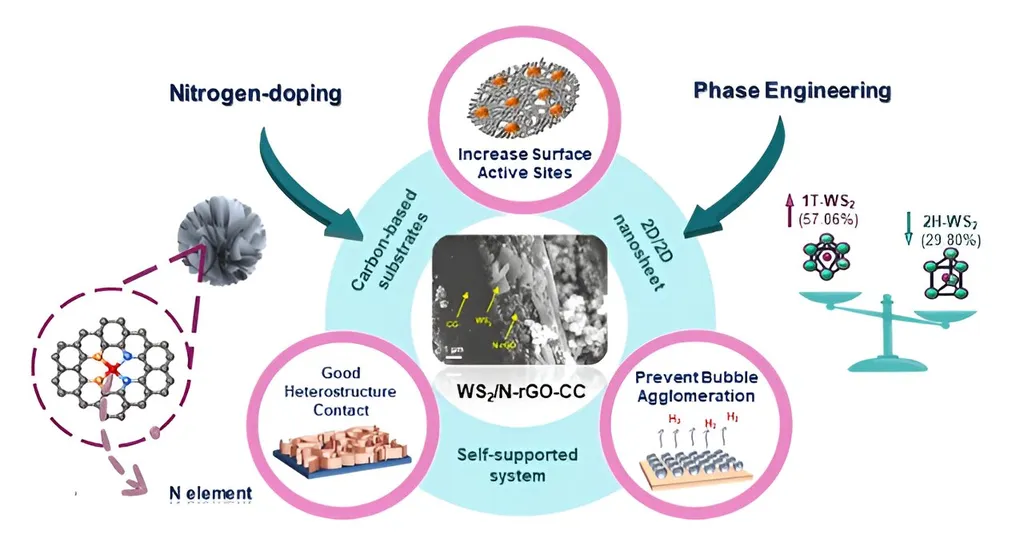In a significant stride toward sustainable energy solutions, researchers have developed a novel, noble metal-free electrocatalyst that could revolutionize hydrogen production. The study, led by Mingguang Ouyang from Guangxi University, presents a promising alternative to traditional catalysts that rely on expensive and scarce noble metals. Published in the journal *Energies*, the research focuses on the electrocatalytic decomposition of ammonia, a process that holds great potential for clean hydrogen generation.
The team engineered Cu-doped ZIF-8 architectures, growing them in situ on nickel foam substrates through a simple room-temperature hydrothermal synthesis. By optimizing the Cu/Zn molar ratio, they achieved exceptional performance with a catalyst dubbed Cu0.7Zn0.3-ZIF/NF. This catalyst exhibited a distinctive nanoflower-like architecture, significantly increasing accessible active sites and demonstrating superior electrocatalytic performance.
“Our findings highlight the substantial benefits of integrating copper doping into ZIF-8 structures,” Ouyang explained. “The synergistic electronic structure modulation between Zn and Cu not only enhances charge transfer but also boosts catalytic efficiency, making this a highly effective and durable solution for ammonia decomposition.”
The hybrid catalyst achieved a current density of 124 mA cm−2 at 1.6 V vs. RHE and a notably low Tafel slope of 30.94 mV dec−1, outperforming both Zn-ZIF/NF and Cu-ZIF/NF. This performance is a testament to the catalyst’s potential for large-scale hydrogen production, offering a cost-effective and sustainable alternative to conventional methods.
The implications for the energy sector are profound. As the world shifts toward cleaner energy sources, the demand for efficient and affordable hydrogen production technologies is growing. This research could pave the way for commercial applications that reduce reliance on fossil fuels and lower the carbon footprint of energy production.
“Our goal is to contribute to the development of sustainable energy technologies that can be scaled up for industrial use,” Ouyang added. “The success of this catalyst brings us one step closer to achieving that goal.”
The study not only presents a noble metal-free electrocatalyst with exceptional efficiency and durability but also demonstrates the significant potential of MOF-derived materials in sustainable hydrogen production technologies. As the energy sector continues to evolve, innovations like this could shape the future of clean energy, driving progress toward a more sustainable and environmentally friendly energy landscape.

